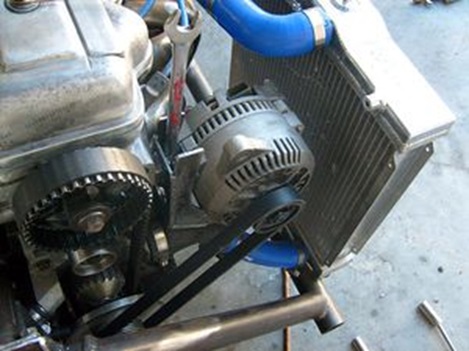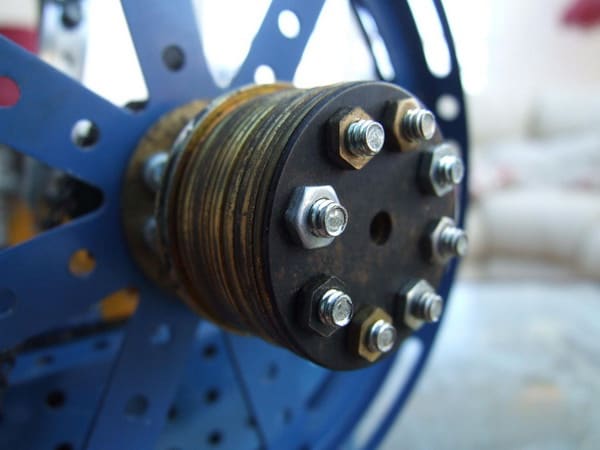Ford Escort SOHC timing belt replacement
Last Updated on March 12, 2024 by Mutiara

The following procedure was written while working on a 2nd gen Ford Escort LX. However it is identical to the procedure in 3rd gen Ford Escorts, and may be similar to 1st gen Ford Escorts as well. It is however strictly for SOHC engines.
Please note that replacing the timing belt is not as critical on the SOHC engines as it is on others, and other cars, because SOHC Ford Escorts are equipped with a non-interference engine. This is an area that is always heavily stressed by mechanics and other vehicle owners, however in the event of a timing belt failure the car simply will not run until a new one is installed, without any damage to the engine having occurred. Even though it’s not good to neglect a vehicle, the timing belt can be put off until it breaks if temporarily breaking down on the side of the road is acceptable. Due to this common misconception sometimes it is possible to buy Ford Escorts really cheap because some owners believe their car is in need of a whole engine replacement when all it really needs is a few hours and a new belt.
Changing the water pump is recommended while changing the timing belt, to avoid the hassle of having to repeat this procedure later on.
Differences between models
- Both 2nd and 3rd gen crank and cam pulleys, alignment, notches, and spacing are identical.
- Both the 2nd and 3rd gen water pumps interchange.
- The 2nd gen water pump is significantly cheaper, and is recommended to use even on a 3rd gen Ford Escort.
- The timing belts on both generations also interchange, with one exception. Since the water pump on a 2nd gen has a smaller pulley and stretches the belt less, a 3rd gen timing belt can be used with a 2nd gen water pump because it can be tensioned more. However a 2nd gen timing belt cannot be used with a 3rd gen water pump because it will not have enough length to stretch over the larger tensioner.
- The timing belt covers do not interchange between models or water pumps.
Procedure
The following procedure can be done in as little as 15 min (on cars without timing covers), or 30 min – 2 hours on most stock Ford Escorts.
- Remove the 3 nuts securing the timing belt cover. There are two on the upper-front of the cover parallel from each other, and a third down lower in the middle. The cover does not come off easily, and may require removing other things.
- Insert a 3/8 in drive ratchet into the belt tensioner, to loosen the tensioner.
- Remove the serpentine belt, note the path it takes to avoid confusing during reinstallation. Now is a good time to replace the belt, however it is not as critical during failure as some vehicles because the water pump is run off the timing belt, so in the event of an accessories belt failure, the A/C, Alternator, and Power Steering systems receive no power, but this causes no harm to the vehicle.
- Place a jack with a piece of wood on it under the oil pan and raise the engine a bit. Not enough to actually raise it, but just to support it once the engine mount is removed.
- Remove the three bolts on the lower bracket for the mount.
- Remove the bolt that goes through the mount and then remove the mount.
- Remove the timing belt cover.
- Loosen the tensioner (not all the way) for the timing belt.
- 2nd gen models will requier taking a pry bar an pushing the timing belt tensioner (pulley) forwards, or to the left is standing to the side of the engine. Once it is pushed all the way to the left, retighten it to prevent movement.
- 3rd gen models will require loosening the tensioner and then inserting an allen key into the tensioner and rotating it.
- Remove the old belt.
- Align the crankshaft and camshaft gears.
- Each gear has very obvious markings on the block/head and on the gear itself. The gear will contain a small needle like notch, while the engine block will have a small notch in the aluminum part of the oil pump at 12 o clock, and the cylinder head will have a dot notched as well in the 12 o clock position.
- Rotate each gear until the notches are lined up to the best of your ability. It does not have to be super precise, since the belt consists of fairly wide teeth which will ensure perfect alignment once the belt is reinstalled correctly.
- The bottom crankshaft gear can be turned with a 19 mm socket wrench.
- Reinstall the belt.
- Loosen the tensioner and let it tighten the belt.
- Tighten the tensioner.
- Rotate the bottom crankshaft gear with the 19mm socket 4 times, which will do 2 full belt rotations. Check to make sure the arrows on the gears are still aligned properly. If they are off by 1 mm or so it’s alright, because if you observe there is quite a distance between the middle of one teeth to the middle of another on the timing belt, which would throw off the arrows by a significant amount if it is misaligned.
- Reinstall the cover (optional). The cover doesn’t do much other than prevent easy access to the area again the future. Reinstallation is not necessary, because even in the worst environments where there is a chance of a small rock or piece of debree making it’s way in the teeth, the engine is a non-interference engine and no harm is done to the internals if it ever skips a tooth or the timing belt snaps.
- Reassemble the motor mount and tighten it to 69 ft-lbs. Though measuring torque is not really important in this area as long as it’s on tight. The thick studs used in the motor mount could easily withstand over 150 ft-llbs if they had to.
- Reinstall the drive belt.
